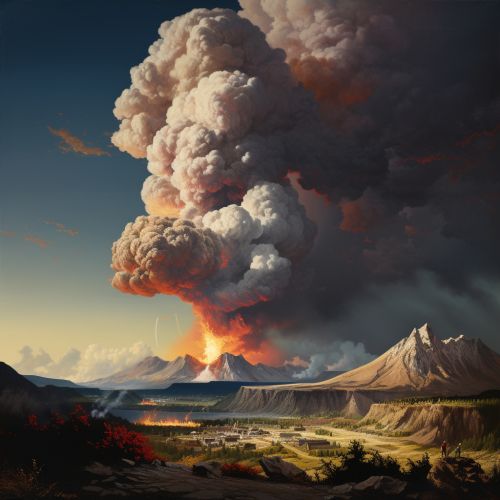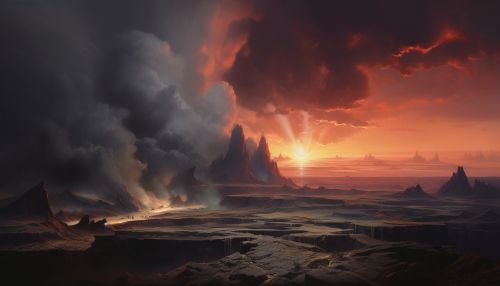Ejecta
Introduction
Ejecta refers to the material that is expelled from an area, such as a volcanic vent, during an explosive event. This term is commonly used in various scientific fields, including geology, astronomy, and planetary science, to describe the debris that is thrown out during events such as volcanic eruptions, meteorite impacts, and stellar explosions.
Geological Ejecta
In geology, ejecta is often associated with volcanic eruptions. During an eruption, a volcano can expel a wide variety of materials, including lava, ash, and pyroclastic flows. These materials can be thrown out of the volcano at high speeds, and can cover large areas surrounding the volcano.


The size, composition, and distribution of volcanic ejecta can provide valuable information about the nature of the eruption, including the type of magma involved, the force of the eruption, and the potential hazards associated with the event.
Pyroclastic Ejecta
Pyroclastic ejecta is a type of volcanic ejecta that is composed of a mixture of hot gas, ash, and rock fragments. This type of ejecta is associated with explosive eruptions, and can be extremely dangerous due to its high temperature and speed.
Pyroclastic ejecta can take several forms, including pyroclastic flows and pyroclastic surges. Pyroclastic flows are ground-hugging avalanches of hot ash, pumice, rock fragments, and volcanic gas that can travel at high speeds and cover large areas. Pyroclastic surges are similar to pyroclastic flows, but are less dense and can travel over and around obstacles.
Tephra Ejecta
Tephra is a type of volcanic ejecta that is composed of fragments of rock, mineral crystals, and volcanic glass. The size of tephra fragments can range from less than a millimeter (ash) to several meters (volcanic bombs and blocks).
The distribution of tephra can provide valuable information about the direction and intensity of a volcanic eruption. In addition, the composition of tephra can provide insights into the type of magma involved in the eruption, and the processes that occurred within the volcano prior to the eruption.
Astronomical Ejecta
In astronomy and planetary science, ejecta is used to describe the material that is expelled during a meteorite impact or a stellar explosion.
Meteorite Impact Ejecta
When a meteorite strikes a planet or moon, it can cause a large amount of material to be ejected from the impact site. This material, known as impact ejecta, can include fragments of the meteorite itself, as well as rock and soil from the impact site.
The distribution and composition of impact ejecta can provide valuable information about the size and speed of the meteorite, as well as the nature of the impact site. In addition, the study of impact ejecta can provide insights into the history of meteorite impacts on a planet or moon, and the effects of these impacts on the planet's or moon's geology and climate.
Stellar Explosion Ejecta
In the field of astronomy, ejecta is also used to describe the material that is expelled during a stellar explosion, such as a supernova. This material, known as supernova ejecta, can include a wide variety of elements, including those that are created during the explosion itself.
The study of supernova ejecta can provide valuable insights into the processes that occur during a stellar explosion, as well as the life cycle of stars and the formation of elements in the universe.
